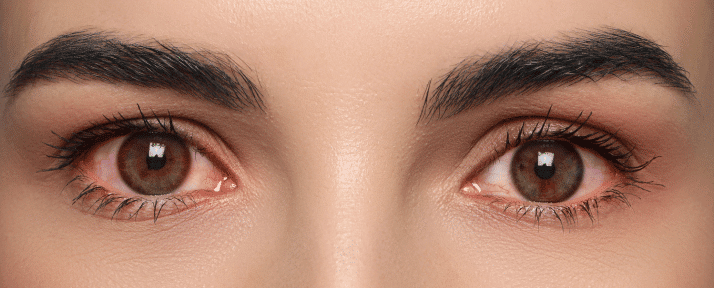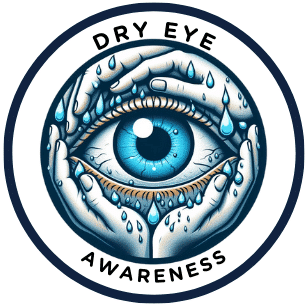
Welcome to our comprehensive guide on the symptoms of dry eye syndrome. Dry eye can occur when your eyes do not produce enough tears or when the tears evaporate too quickly. Recognizing the symptoms is crucial for early detection and effective management. We will explore the common signs and symptoms of dry eye syndrome and provide the information you need to take control of your eye health.
Common Symptoms of Dry Eye Syndrome:
- Dryness and Irritation: One of the hallmark symptoms of dry eye is persistent dryness and eye irritation. You may feel a gritty or sandy sensation as if something is in your eyes. Discomfort can worsen throughout the day or in specific environments, such as when exposed to smoke, wind, or air conditioning.
- Burning or Stinging: Many dry-eyed individuals experience a burning or stinging sensation in their eyes. This discomfort can be particularly noticeable when performing visually demanding tasks or spending time in dry, dusty, or smoky environments.
- Redness: Dry eye can cause redness in the whites of your eyes, giving them a bloodshot appearance. This redness may be intermittent or persistent. It can vary in severity, from a subtle pinkish hue to a deeper, more pronounced redness.
- Excessive Tearing: Paradoxically, dry eyes can sometimes lead to excessive tearing as your eyes attempt to compensate for the lack of moisture. However, these tears may not provide the necessary lubrication, leading to temporary relief and increased dryness. This phenomenon is known as reflex tearing.
- Blurry Vision: Blurred vision, especially during periods of prolonged focus, is a common symptom of dry eye. Your vision may fluctuate, and objects may appear hazy or out of focus. This blurriness can be particularly noticeable when reading, using digital screens, or performing tasks that require clear vision.
- Sensitivity to Light: Dry eye can make your eyes more sensitive, causing discomfort in brightly lit environments or when exposed to sunlight. This sensitivity is known as photophobia. You may find yourself squinting or seeking shade to reduce the discomfort caused by excessive light.
- Eye Fatigue: Individuals with dry eyes often experience eye fatigue or a feeling of heaviness in their eyes, especially after extended periods of reading, watching screens, or performing visually demanding tasks. This fatigue can make maintaining focus challenging and lead to decreased productivity and discomfort.
- Discomfort with Contact Lenses: Dry eye can make it challenging to wear contact lenses comfortably. Many people find their lenses to feel dry, scratchy, or uncomfortable after only a short time. Contact lens wearers who experience dry eyes may also experience more lens deposits and decreased wearing time compared to when their eyes are adequately lubricated.
- Foreign Body Sensation: Some individuals with dry eyes may experience a sensation of having a foreign body, such as sand or grit, in their eyes. This feeling can be persistent and bothersome, leading to frequent rubbing or blinking to alleviate the discomfort.
- Eye Itching: Itching of the eyes is another symptom that can occur in dry eyes. The itching may be mild to severe and can lead to rubbing of the eyes, which can further exacerbate the symptoms.
When to Seek Medical Attention: If you experience any of these symptoms consistently or they begin to interfere with your daily activities, it is essential to seek medical attention. An eye care professional can evaluate your symptoms, perform diagnostic tests, and recommend appropriate treatment options to alleviate discomfort. They can also help rule out other underlying conditions contributing to your symptoms.
Conclusion: Recognizing dry eye symptoms is the first step toward effective management and relief. If you’re experiencing any of the symptoms mentioned above, it’s essential to consult with an eye care professional for a proper diagnosis and personalized treatment plan. Understanding your symptoms empowers you to take control of your eye health and enjoy clear, comfortable vision once again.
This article should not replace professional advice. Always consult an eye care professional for an accurate diagnosis and appropriate treatment.

Great article on recognizing the symptoms of dry eye syndrome! Dryness, irritation, burning, redness, excessive tearing, blurry vision, sensitivity to light, eye fatigue, discomfort with contact lenses, foreign body sensation, and eye itching are all common signs to be aware of. Seeking medical attention if these symptoms persist or interfere with daily activities is crucial for proper diagnosis and personalized treatment. Taking control of your eye health starts with understanding and addressing these symptoms.
Thank you Jason for your comment. Recognizing what the symptoms of dry eye syndrome are is the first step to getting the proper diagnosis and treatment for this condition.